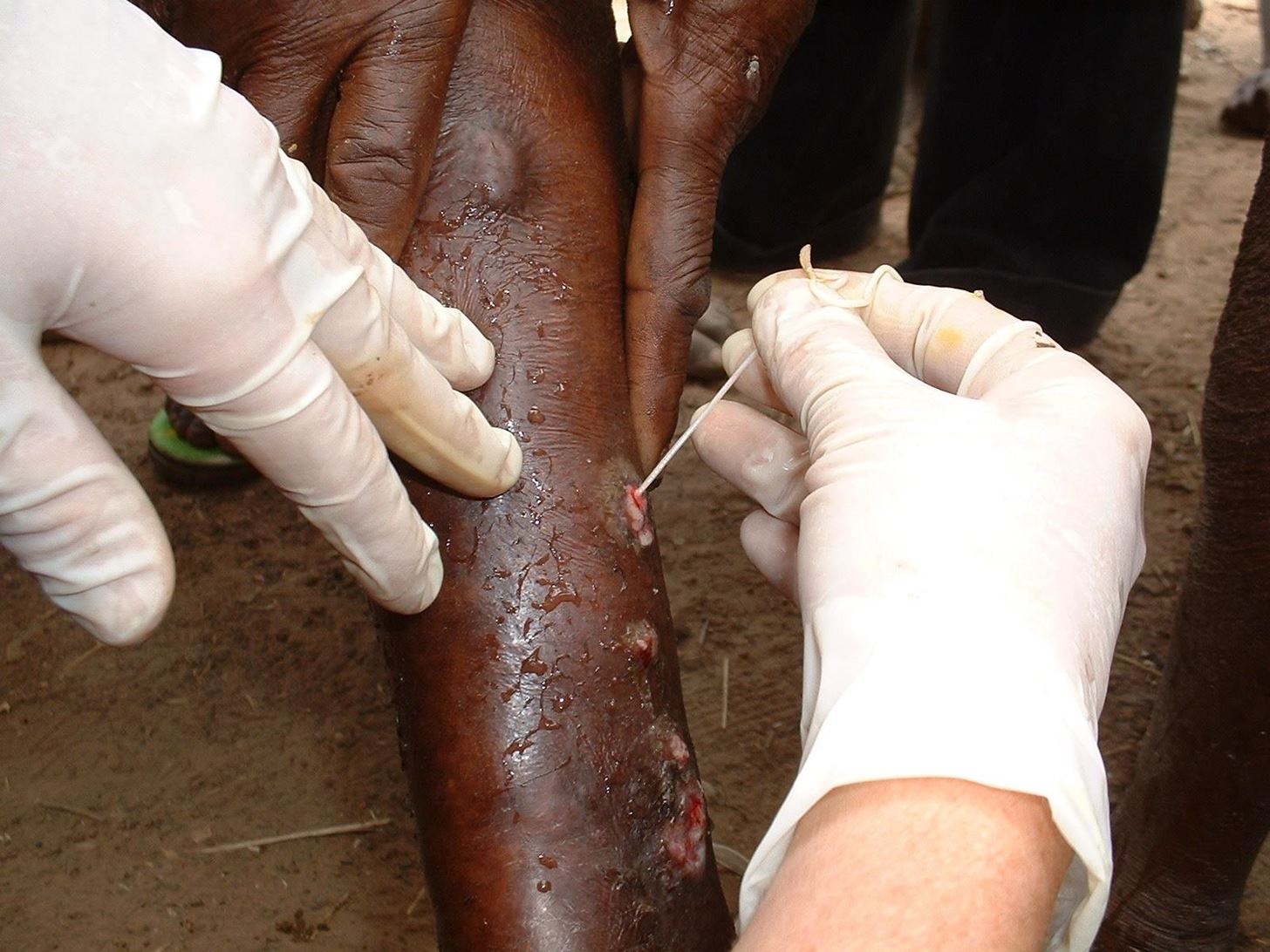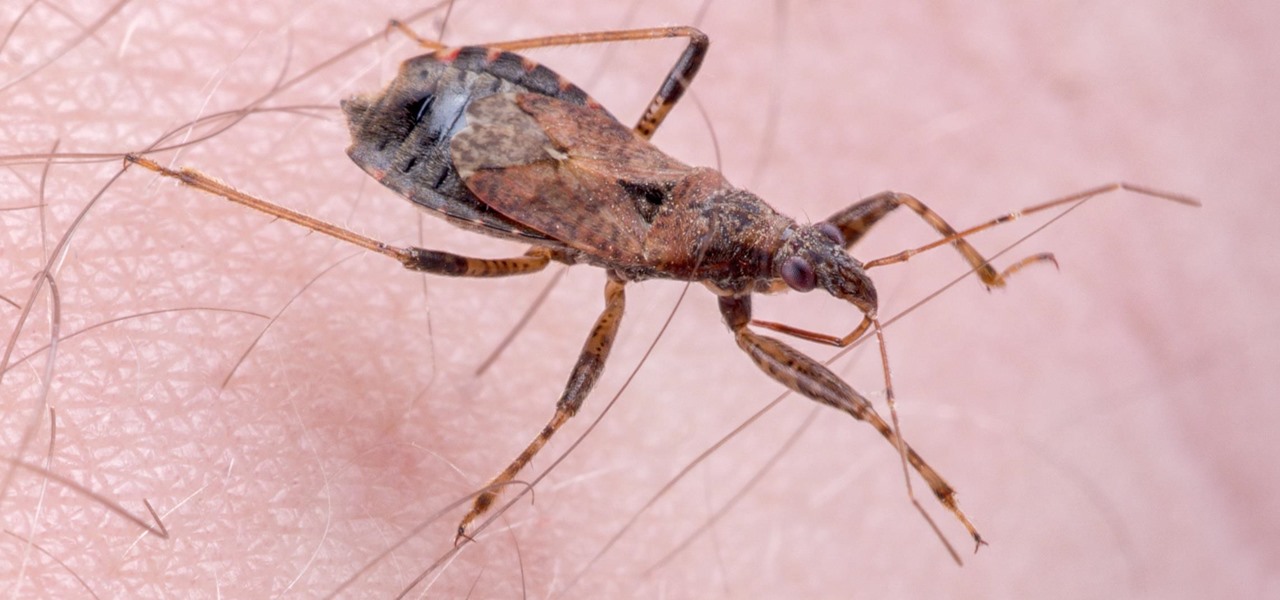You may not have heard of visceral leishmaniasis, onchocerciasis, or lymphatic filariasis, and there is a reason for that. These diseases, part of a group of infections called neglected tropical diseases (NTDs), impact more than a billion people on the planet in countries other than ours. Despite the consolation that these often grotesque illnesses are "out of sight, out of mind," some of these infections are quietly taking their toll in some southern communities of the US.
The World Health Organization (WHO) defines NTDs as a large group of communicable diseases that are endemic, or native, to subtropical and tropical regions of the world. These debilitating infections typically affect communities that do not have resources for prevention, eradication, or treatment.
Inspired by the WHO, a document called the "London Declaration on NTDs" was signed in January 2012 that united a group of pharmaceutical, philanthropic, and financial organizations in the common goal to "control or eliminate" at least ten NTDs by the end of the decade.
The fourth status report on the London Declaration reveals progress in the areas of data collection and surveillance, drug donations from Big Pharma to prevent and treat NTDs, and on-the-ground success in outlying regions in desperate need of public health aid. But that doesn't mean we're safe.
While the global coalition is meeting some milestones, other goals are more challenging. Let's take a look at the dangerous diseases this determined group hopes to eradicate in coming years.
1) Hansen's Disease, aka Leprosy
Caused by Mycobacterium leprae, this contagious disease causes permanent damage to the eyes, limbs, nerves, and eyes, and leaves disfiguring lesions on the skin. Although it doesn't spread quickly, Hansen's disease has caused untold suffering to victims shunned as "lepers."

Now treatable with antibiotics, Hansen's disease is declining around the world. In the United States, Hansen's disease is endemic to Florida and often associated with contact with armadilloes. Case counts declined to 18 cases in 2016 from 27 confirmed cases in 2015.
2) Visceral Leishmaniasis
Spread by a tiny sandfly, visceral leishmaniasis is almost always fatal if untreated. Leishmania are protozoa that cause three types of leishmaniasis. The visceral form, which infects and destroys bone marrow and internal organs, is likened to malaria in numbers of victims and suffering that results from infection.
Case counts and fatalities continue to decline. Rapid diagnosis and treatment boost reduction and elimination progress in areas like Nepal and Bangladesh where the disease is endemic.
3) Guinea Worm Disease
Dracunculiasis, also called Guinea worm disease, is spread by Dracunculus medinensis parasites that infect water fleas. Victims of this disease drink water with the parasite which then infects their body. Initially, there are few to no symptoms. Eventually, the female worms tunnel out of the skin in the lower limbs. The burning ulcering of the skin causes victims to put their feet and legs in water. In contact with water, the female expels large quantities of larvae into the water to continue the infection cycle.
Through global efforts to eradicate the parasite, human cases have dropped by 83 percent. Despite the unending conflict in affected regions, several countries, including Ghana, are worm-free. According to the fourth progress report, compared to 2012, cases of Guinea worm have decreased in Nepal by 46%, Bangladesh by 67%, and India by 61 percent.

The Carter Foundation, led by former President Jimmy Carter, led the latest effort to eliminate Guinea worm disease. Philanthropist and business leader Bill Gates noted in an interview with STAT to "give us a couple of years and hopefully those things will get straightened out. President Carter deserves to celebrate the end of Guinea worm."
The Bill and Melinda Gates Foundation is a private foundation that is a driving factor in global health advances through funding, partnerships, and collaborative enterprise. The Foundation is guided by the fundamental belief "that all lives have equal value."
4) Human African Trypanosomiasis
Also known as sleeping sickness, this infection is spread by tsetse flies infected with parasitic protozoans. The most common infection carried by the flies is sleeping sickness, caused by Trypanosoma brucei gambiense parasites. Fever, joint pain, and itching characterize the first stage of the illness. As the disease progresses, the infection invades the central nervous system, causing changes in behavior and personality and stupor. Without treatment, the infection is usually fatal.
Presently, cases of sleeping sickness are on the decline, with fewer than 3,000 cases confirmed in 2015. Research continues, and pharmaceutical companies Bayer and Sanofi provide important treatments to affected regions.
5) Chagas Disease
American trypanosomiasis, also known as Chagas disease, infects humans through the bite of the kissing bug, triatomine. The bug is so named because it prefers to crawl onto the face of sleeping victims to bite and suck blood from skin near the mouth. Triatomine bugs live in the roofs and cracks of rural, muddy, or poorly built dwellings, and in impoverished areas throughout the Americas.

The Trypanosoma cruzi protozoa don't spread through the exchange of fluids during the bite, but by the habit of the triatomine bug of urinating or defecating close to the lesion the bug opens to feed. When the victim itches the lesion, he or she spreads the parasite into the open wound.
If the infected person receives anti-parasitic drugs during the initial, acute phase of the infection, the disease is usually curable. Sadly, many victims of Chagas disease have no idea they are infected and do not become aware of it until a blood test or symptoms arise in later life.
Unfortunately, the parasite aims for, and resides in, the heart muscle, where it bores holes. Often, infected patients are unaware of the infection until they suffer serious cardiac symptoms. When years have passed, drugs are less effective, and there is no treatment or cure. In addition to digestive and other problems, the disease can eventually lead to heart failure.

The Centers for Disease Control and Prevention (CDC) estimate more than eight million people in South America, Mexico, and Central America have Chagas disease, and most are probably unaware of the infection. Approximately 300,000 Americans have Chagas disease.
Researchers haven't made much improvement in the fight against Chagas. Although the triatomine bug is endemic to the US, Chagas may not be recognized by physicians who lack training in NTDs. The triatomine bug lives throughout the southern half of the United States.
6) Trachoma
Caused by the bacteria Chlamydia trachomatis, trachoma is the leading cause of infectious blindness or visual impairment. It impacts over one million people according to the WHO. Spread through its watery discharge by hands or flies landing on the face, the bacteria causes repetitive eye damage and discomfort which can lead to blindness.
While a strong global partnership backs efforts against the disease, lack of funding and difficulty getting drugs to the right regions has hampered progress against trachoma.
7) Onchocerciasis
Caused by a parasitic worm, onchocerciasis, or river blindness, is spread by the bite of infected black flies. More than 25 million people are infected with river blindness and the CDC estimates another 123 million are at risk. As its name implies, the fly that spreads the parasites breeds in waterways, and the infection causes visual impairment and blindness. More than 300,000 have lost their sight due to the infection, and 800,000 have been left with poor vision.

Some treatment milestones have been met, while other advances were made. Access to impacted populations and civil unrest are challenging progress against river blindness.
8) Lymphatic Filariasis
The common name of this disfiguring disease is elephantiasis. Caused by a parasite carried by mosquitoes, when transmitted through a mosquito bite, the parasites move into the human lymph system where they grow to be small, thready worms. More than 120 million people are affected by the infection in 73 tropical and subtropical countries.

As a result of infection, victims suffer lymphedema, swelling of the limbs and, for men, the scrotum. The disease can lead to permanent disability and social and economic stigma.
Advances are being made treating LF, and while drug coverage is adequate, research continues on a suggested three-medication therapy that might reduce treatment times.
9) Schistosomiasis
Also known as bilharzia, schistosomiasis is an infection caused, like many NTDs, by parasitic worms. With more than 200 million victims around the world, this parasite spreads by contact with contaminated freshwater. Infected people defecate or urinate in the water, contaminating it. The parasites then move into freshwater snails, and they can survive for a short period free-swimming in the water, then penetrate the skin of people who are swimming, wading, working, or washing.
The worm moves throughout the body, residing in blood vessels, causing inflammation, scarring, and damage to internal organs. Appropriate medication treats the infection. Schistosomiasis is widespread in freshwater lakes and rivers in a large portion of the world.
Progress against the infection is continuing, but the world failed to meet our 2015 elimination goals as the effort outstripped resources and funds intended to battle the parasite.
10) Soil-Transmitted Helminths
Helminths are parasitic worms that target the intestine. There are several types, with prominent types being hookworms, whipworms, and Ascaris. These parasitic worms contaminate soil, especially in areas where sanitation is lacking. A primary method of transmission is walking barefoot, as the larvae can penetrate the skin.

Infection can be mild or grave, and symptoms vary from none to terrible gastrointestinal discomfort. The parasitic worms feed on internal tissues and blood, which impairs growth and has significant health impacts to the over 1.5 billion people affected by these parasites.
Soil-dwelling helminths live in Texas and along the Gulf Coast of the US, especially in impoverished areas. We're making good progress against these parasites, even as they remain a neglected, though not necessarily tropical, infection in the US.
The positive health impacts achieved so far by partners to the London Declaration are almost too great to estimate in terms of human lives saved, and suffering relieved and prevented. Long-term funding and resource commitments are the only means by which NTDs can be checked and eliminated in Third-World countries, and right here in American backyards.
Just updated your iPhone? You'll find new emoji, enhanced security, podcast transcripts, Apple Cash virtual numbers, and other useful features. There are even new additions hidden within Safari. Find out what's new and changed on your iPhone with the iOS 17.4 update.


























Be the First to Comment
Share Your Thoughts